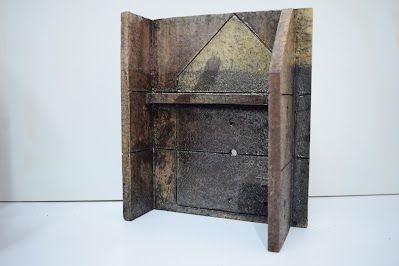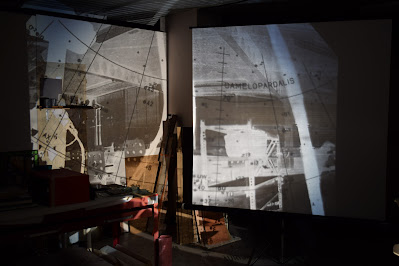Outpost 290422
Mattering : Forming agencies with materials.
Building Embedded Knowledge.
Cognitive Modulation.
Transitions, Circulation, Feedback Loops.
The Project is The Prototype
Proto-Typing for Architects, Mark Burry, Jane Burry, 2016.
The Disaster Area, J. G. Ballard.
Foster Associates, Glass ramp, Crescent Wing, Sainsbury Centre for Visual Arts, Norwich, 1988-91.
The Re-Enchantment of Architecture.
In today's architecture, opacity and depth is often replaced by the enmeshing and layering of translucent, [perforated and transparent surfaces. The currently popular application of screening veils on top of glass surfaces is clearly an attempt to reintroduce mystery, ambiguity, fragmentation, and a distinct tactile eroticism to all-glass facades. Even ornament and decoration have reappeared in entirely new forms, as images imprinted or engraved on sheets of glass.
Glass is, again, transforming into the ideal material for this new layered and eroticized hapticity.
The Modulation of Translucency
Simulacrum, Andreas Horlitz, 2006.
It is the selection of medium, the combination of mirrored and engraved glass mounted in a light box, that enables the viewer to grasp the complexity of the selected theme.
St Gobain, glass research at Aubervilliers of 300 tests to obtain a new substance from clear glass.
Glass is a material of the alchemist and the magician: while being nearly invisible, it isolates, separates and unites at the same time. Glass acquires cosmic and metaphysical qualities, the multiple, subtly changing visual character of glass adds to its fascination.
Transparency transforms into a reflection, immateriality into mass, light into darkness.
The Poetics of Glass/Immateriality and Transparency, 2003.
The result was a translucent non transparent glass, that let the light through but not the view: a glass that diffused the light not by reflecting it on its surface but from its very texture. This modulation of the translucency was the natural consequence of the uneven distribution of tiny bits of glass of different sizes, and of their partly “deglazing” during fusion.
Pierre Soulages decided to do without the edges that usually delineate the shapes of the windows, thus enhancing the pure and powerful architectural lines of the windows, and this move incidentally bridged his work to the early alabaster panels that were being used for churches before the invention of stained glass. The cartoon work was started with the contribution of Jean-Dominique Fleury and Eric Savalli. A particular process was used: the lead work was marked with black adhesive tape of the same width, stretched over a white and smooth surface of the same dimensions as the window. As it could be removed many times, the tape permitted to elicit the right line by looking from a short distance.
Jean-Dominique Fleury remembers: Soulage's eye drawing from a distance, monitoring the line, the stretched tapes outlining the spaces, and the straight lines of the cartoon, adding blackness, thickness and graphical vigor.
Building Durable
Robust Practice
Local Interactions
Making its way towards a definite geographical location.
No question of duration.
Lost all interest in the problem of how long.
Holding someone, some thing, an architecture by the hand.




























.jpg)


.jpg)